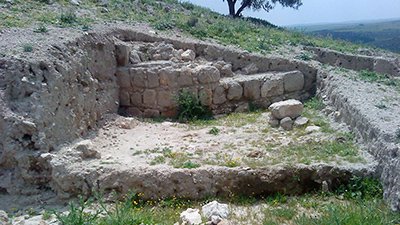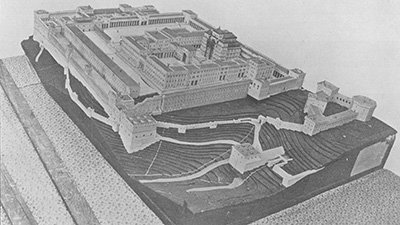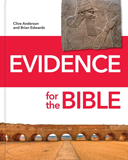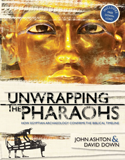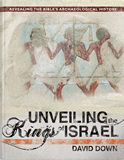Fact-Checking the Bible
Does archaeological evidence line up with the Bible’s historical claims?
Today, a whole industry has sprung up around ensuring that the media are reporting news stories accurately. While sometimes fact-checking can be partisan, like when the satire site Babylon Bee was hilariously flagged as “fake news,” Christians can get behind the idea that facts should be reported truthfully.
But would the Christian’s authoritative book, the Bible, stand up to fact-checking scrutiny? Almost every detail of the Bible has been questioned over the 2,000 years of Church history. Christians didn’t originally present their claims to a credulous and accepting audience; they had to defend their claims, often to hostiles, especially when speaking about events that happened in history that can be placed on a map and a timeline.
With the advent of archaeology, we can investigate the Bible’s claims about ancient history in a way that people at earlier points could not. Sometimes, the results include clear-cut evidence in support of the Bible’s description of people, places, and events; however, it is not always obvious, and we need to be prepared to think about the evidence more critically. Even so, when we approach the evidence from a stance of confidence in biblical authority, we see that archaeology overwhelmingly supports the Bible’s accuracy.
When Were Camels Introduced to Israel?
When searching for “archaeology disproves the Bible,” one of the first results is a 2014 study claiming that camels were introduced to Israel hundreds of years after the Bible puts camels in Israel.1 Abraham and Job were portrayed as having great numbers of camels, but in a number of archaeological sites, camel bones were found beginning in the era of 1–2 Kings and 1–2 Chronicles. This gave rise to a number of hysterical headlines claiming the Bible had been disproved once and for all. Even conservative media site, Fox News, gave the headline “Camel bones suggest error in the Bible, archaeologists say.”2
Generally, when someone makes big claims, it requires significant evidence to support them. And when we examine the scale of the study, we find that it was limited to a few sites in the south region of Israel. The study thus shows that there were no camel bones in those particular areas until the time of the Kings, but it says nothing about anywhere else in Israel, particularly the areas where the Bible claims the patriarchs had camels. Here’s a great article explaining the camel bone study.
Also, Abraham and the other patriarchs did not get their camels from Israel but from Syria, Mesopotamia, and Egypt, where domesticated camels are well-attested.3
Did Priests Erase God’s Wife?
One of the main things that was supposed to differentiate Israel from the nations around them was Israel’s worship of the true Creator God alone. The condemnation of idolatry runs throughout the Old Testament. However, archaeological evidence shows that the Israelites, at least some of the time, worshipped Asherah as Yahweh’s consort. Some scholars, who believe Israel started out as a group of Canaanites and that this history was later erased by priests to encourage monotheism, say that this evidence proves the biblical account of the history of Israel was at the very least edited by partisan individuals.
Christians should be surprised if there weren’t archaeological evidence of widespread idolatry in Israel!
However, while Israel was supposed to worship God alone, the Old Testament indicates that Israel was idolatrous more often than faithful to God. The worship of Asherah, in particular, is mentioned many times as an offensive form of worship. Given the Bible’s scathing condemnation of Israel’s unfaithfulness, Christians should be surprised if there weren’t archaeological evidence of widespread idolatry in Israel!
How Advanced Was Ancient Israel?
One argument against the overall narrative of the Old Testament is that there is simply no evidence of the types of populations that would be required for the armies of the wars depicted in the Old Testament. Another contention is that there is no evidence of the overall sophistication—for instance, that the golden age of Solomon would imply.
These are arguments from silence—we haven’t found evidence for those populations. But arguments from silence are inherently tricky, especially when it comes to archaeology. That’s because the vast majority of archaeologically interesting material in the ground will never be dug up. For an artifact to be discovered, an interested researcher needs the funding, a favorable/safe political situation, and a location where archaeologically significant things exist. We know there are many significant artifacts buried under modern-day Jerusalem that will never be accessed because that would mean destroying current culturally significant places. And oftentimes an argument from silence can be destroyed by a single discovery.
The Edomites, the nation descended from Jacob’s brother Esau, famously lacked any archaeological evidence to the point that they were considered mythological by some. However, this changed with the discovery of an ancient copper mine in Timna that was active when the Bible says Edom lived there. The remains of materials found there suggest a sophisticated nation that imported goods from surrounding nations—even royal purple from the Mediterranean. However, there were no surrounding towns or infrastructure that would be expected to support such a significant operation.4 Incidentally, that copper mine might have been a possible source for the vast amounts of copper Solomon required to construct his palace and the temple (bronze, used in many parts of the construction, is an alloy of mainly copper).
Erez Ben-Yosef of Tel Aviv University had an interesting theory that the people in the area at the time didn’t live in fixed structures but were nomadic and lived in tents. This would give them a much smaller archaeological footprint, meaning they would be essentially invisible.5 Incidentally, this also matches a literal translation of several Bible verses indicating that at least some Israelites lived in tents (Joshua 22:6; 2 Samuel 20:1; 1 Kings 8:66, 12:16), as did the Edomites (Psalm 83:6).
Can Archaeology Prove the Bible?
It’s tempting to look at all the times that archaeology has shown biblical people, places, and events to be accurate and use that to try to prove the Bible. But if we say archaeology can prove the Bible, ultimately we’re saying that archaeology has a type of authority over the Bible. As such, it could “disprove” it someday (as many think it already has). Rather, the Bible is the authoritative account of history. While it isn’t surprising that an infallible book is shown to be correct over and over again regarding its historical claims, the Bible would be just as authoritative if we had none of that evidence at our disposal.
Archaeology thus corroborates (not “proves”) the Bible’s testimony in many areas, but we should be careful not to make archaeology an authority over Scripture. Some parts of the Bible’s narrative may never be corroborated by archaeology, and the fragmentary nature of historical evidence means that it shouldn’t alarm us. Rather, we should trust in God’s inspired Word regardless of whether there is external evidence. But where the Bible can be “fact-checked,” it is invariably found to be true!
For More Information
Footnotes
- Gavriel Fiske, “Camel Archaeology Contradicts the Bible,” The Times of Israel, February 5, 2014, https://www.timesofisrael.com/camel-archaeology-takes-on-the-bible/.
- “Camel Bones Suggest Error in the Bible, Archaeologists Say,” Fox News, October 20, 2015, https://www.foxnews.com/science/camel-bones-suggest-error-in-bible-archaeologists-say.
- Bryant Wood, “Camels in Genesis are Right Where They Belong,” Associates for Biblical Research, March 15, 2022, https://biblearchaeology.org/research/chronological-categories/patriarchal-era/4894-camels-in-genesis-are-right-where-they-belong.
- Matti Friedman, “An Archaeological Dig Reignites the Debate Over the Old Testament’s Historical Accuracy,” Smithsonian magazine, December 2021, https://www.smithsonianmag.com/history/archaeological-dig-reignites-debate-old-testament-historical-accuracy-180979011/.
- Erez Ben-Yosef, “The Architectural Bias in Current Biblical Archaeology,” Vetus Testamentum 69 (2019):361–387.
Recommended Resources

Answers in Genesis is an apologetics ministry, dedicated to helping Christians defend their faith and proclaim the good news of Jesus Christ.
- Customer Service 800.778.3390
- © 2024 Answers in Genesis


